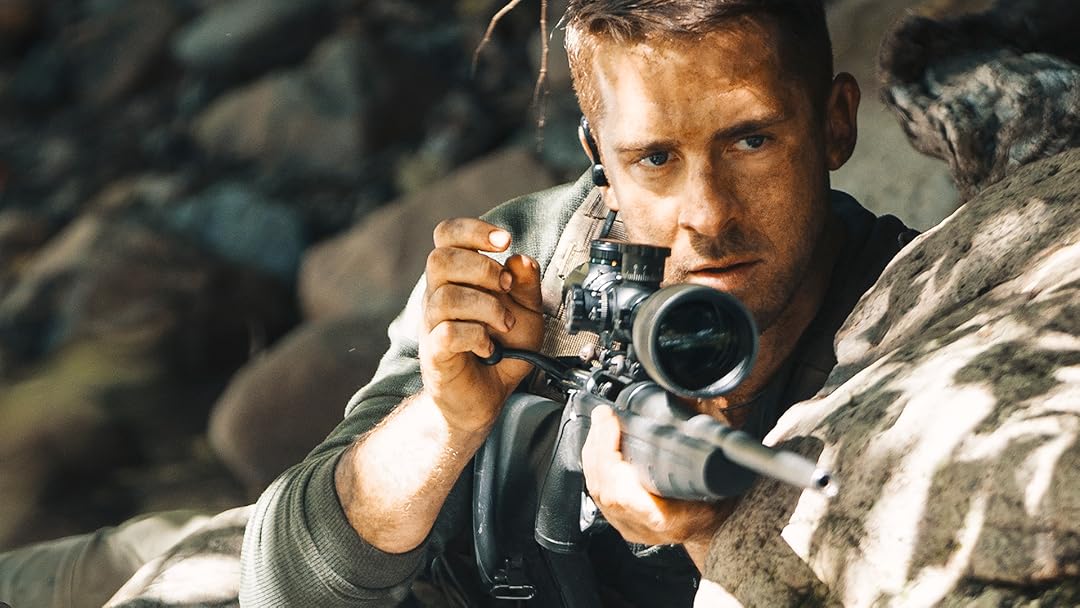Escape and Evasion (2019) – A Haunting Portrait of PTSD and Survival
Escape and Evasion is a stirring Australian war drama directed and written by Storm Ashwood, featuring a commanding lead performance from Josh McConville. The film explores the devastating psychological aftermath of combat, painting a deeply personal and hallucinatory portrait of a soldier consumed by trauma.
The central character, Seth (McConville), returns to Australia after a deadly mission in Burma that left all his men dead. Wracked by survivor’s guilt and post-traumatic stress disorder, he isolates himself, his mental state deteriorating rapidly. Seth is haunted by vivid hallucinations: visions of jungle mud creeping across bedsheets, his hands soaked in blood, relentless flashbacks that blur the line between memory and nightmare.

Cinematically, the film shifts between Seth’s present and past, using fragmented flashbacks to reveal the mission’s unfolding consequences. These jungle-set sequences are grounded, visceral, and well-acted, framing his inner trauma through the lens of war’s chaos. Back home, Seth’s reality deteriorates—he struggles with survivors’ guilt, strained relationships, and the relentless burden of unresolved grief. A determination to lead a normal life collides with his fractured psyche as he tries to rebuild bonds with his family.
When a determined journalist, Rebecca (Bonnie Sveen), begins probing into the Burmese mission—driven by her own connection to one of Seth’s lost comrades—Seth is forced to confront the buried truth. Their interactions pull him further into conflict, mixing external accusation with internal turmoil. These confrontations highlight how deeply trauma disrupts both memory and identity.
Josh McConville delivers a tense, twitchy, and emotionally raw performance. His portrayal of Seth’s unraveling mental state is both gripping and painful to witness. Critics have praised his intensity and vulnerability as the emotional heart of the film. The contrast between his controlled demeanor and emotional breakdowns anchors the narrative in compelling realism.

Visually the film is polished, especially given its modest budget. The jungle combat scenes feel immersive, while domestic settings are claustrophobic and muted—symbolizing Seth’s internal collapse. Cinematographer Wade Muller captures these shifts with clarity and precision, reinforcing the chaos of war and its psychological fallout.
Critics have offered mixed responses: some celebrate its ambition and emotional realism, calling it a "cinematic tour of duty worth taking," while others criticize uneven pacing and occasional script shortcomings like implausible dialogue or contrived drama elements. Despite its flaws, many agree the film’s emotional resonance and McConville’s central performance shine.

Ultimately, Escape and Evasion is not an action-packed war epic; it’s a psychological exploration of modern combat’s unseen wounds. Through visual metaphor and character-driven storytelling, the film suggests that the battle continues long after the fighting ends—this time inside the mind. Seth's experiences are universal for veterans: loss, memory, guilt, and a fractured sense of self. The story asks: when there’s no enemy left to fight, what happens to the soldier within?
In summary, Escape and Evasion offers a raw, taut journey into the ravages of PTSD. Anchored by an intense lead performance, it tackles grief and accountability with ambition and grit. While not polished in every detail, its emotional depth and psychological insight make it a compelling and affecting war drama—worthy of contemplation and conversation.



